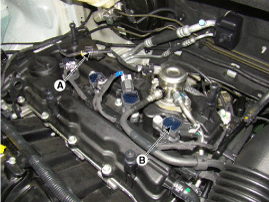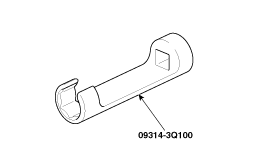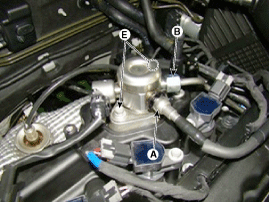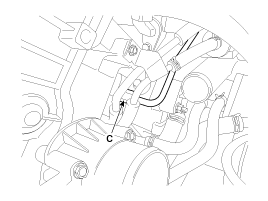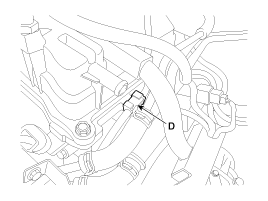 Hyundai Santa Fe: High Pressure Fuel Pump. Repair procedures
Hyundai Santa Fe: High Pressure Fuel Pump. Repair procedures
Removal
In case of removing the high pressure fuel pump, high pressure
fuel pipe, delivery pipe, and injector, there may be injury caused by
leakage of the high pressure fuel. So don’t do any repair work right
after engine stops.
|
| 1. |
Turn the ignition switch OFF and disconnect the battery negative
(-) cable.
|
| 2. |
Release the residual pressure in fuel line.
(Refer to Fuel Delivery System - “Release Residual Pressure in
Fuel Line”)
|
| 3. |
Remove the air cleaner and the air intake hose
(Refer to Engine Mechanical System - “Intake And Exhaust System”)
|
| 4. |
Disconnect the fuel pressure control valve connector (A).
|
| 5. |
Remove the ignition coil (B).
|
| 6. |
Disconnect the fuel feed tube quick-connector (A).
|
| 7. |
Remove the high pressure fuel pipe.
|
| 8. |
Remove the installation bolts (E), and then remove the high pressure
fuel pump from the cylinder head assembly.
|
Installation
|
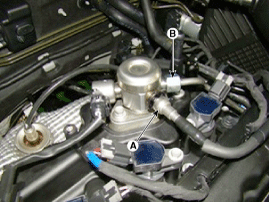
|
|
|
|
|
|
|
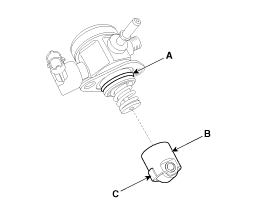
| 1. |
Install in the reverse order of removal.
|

